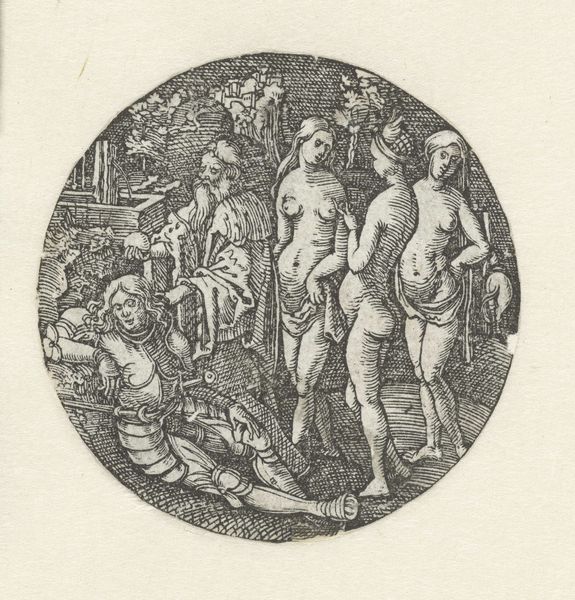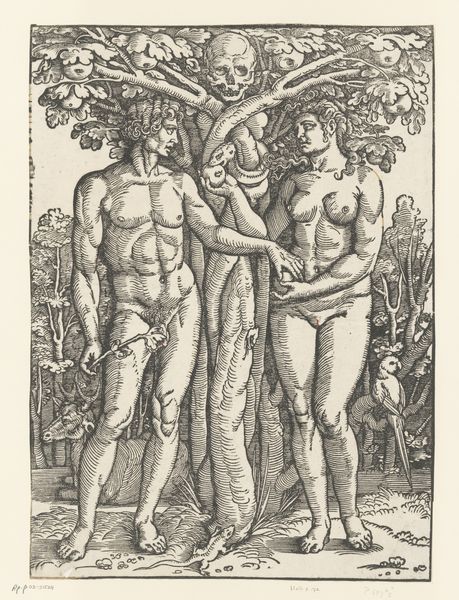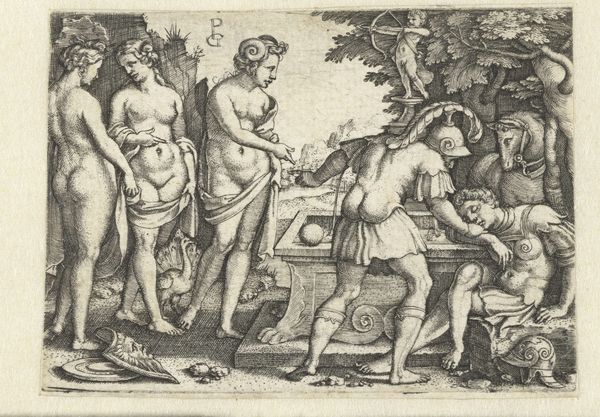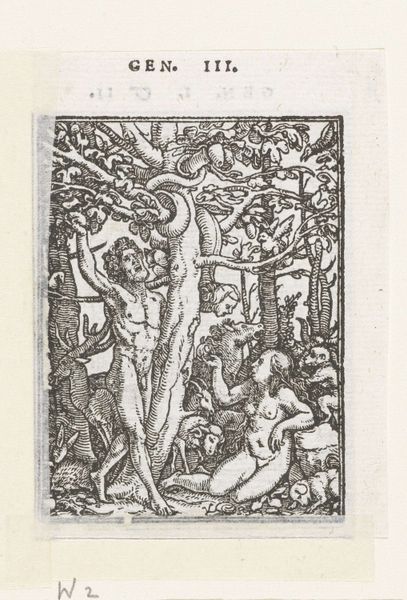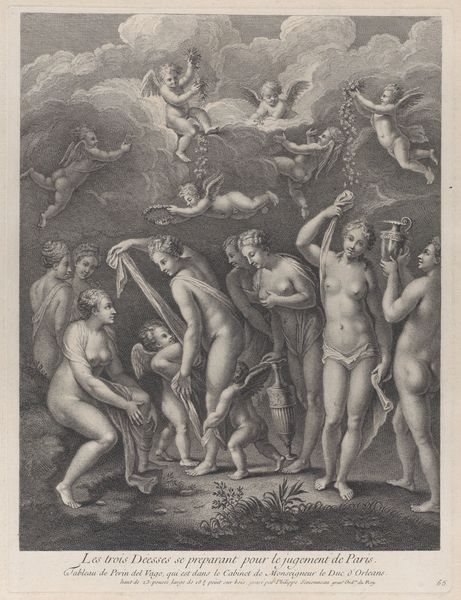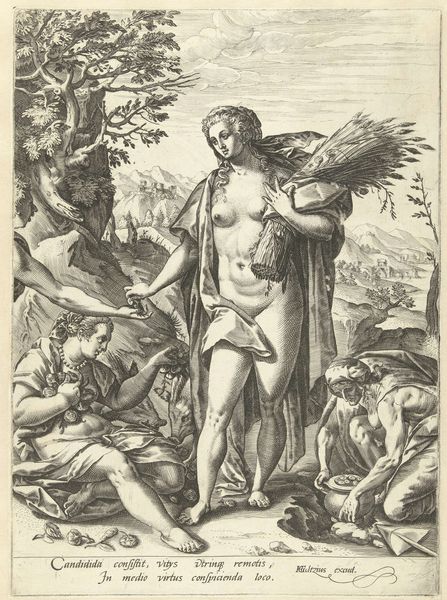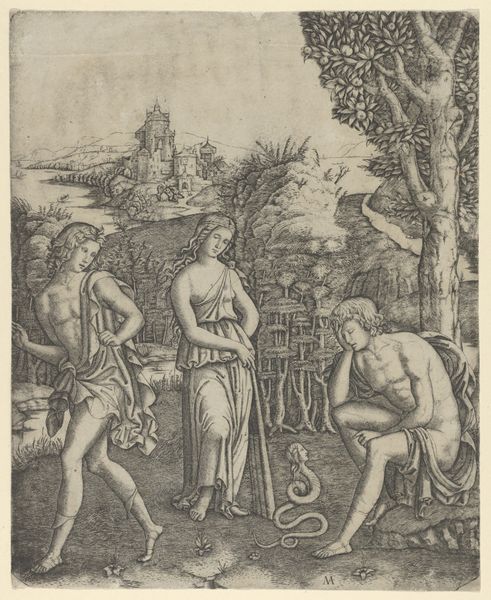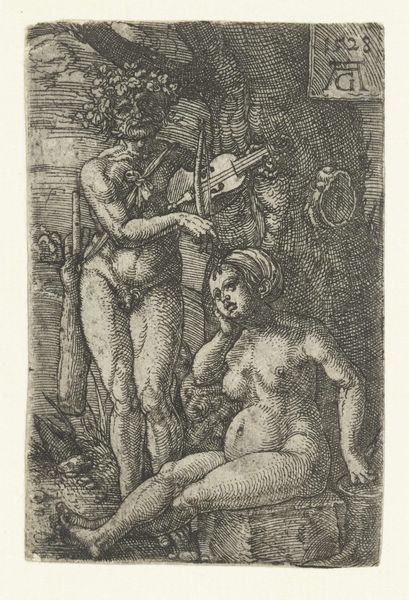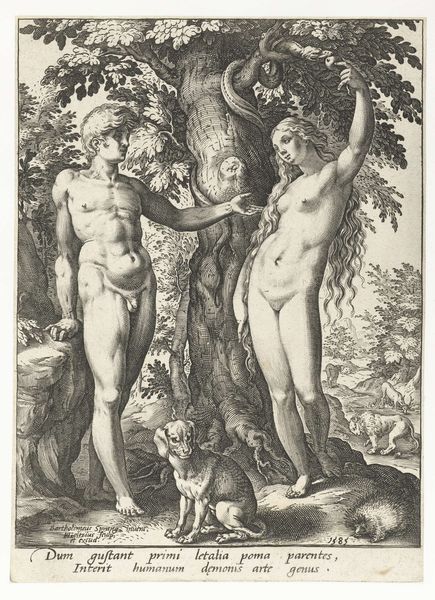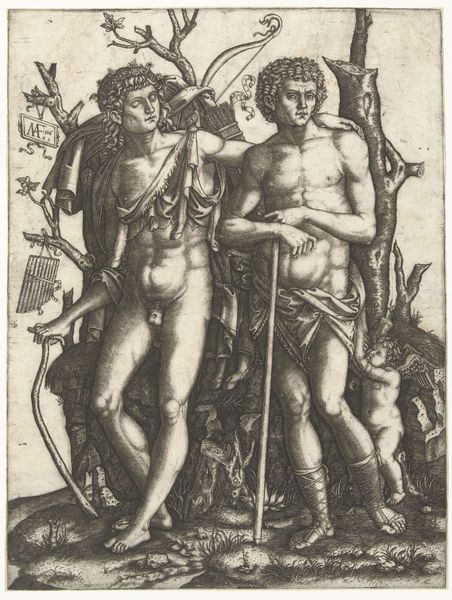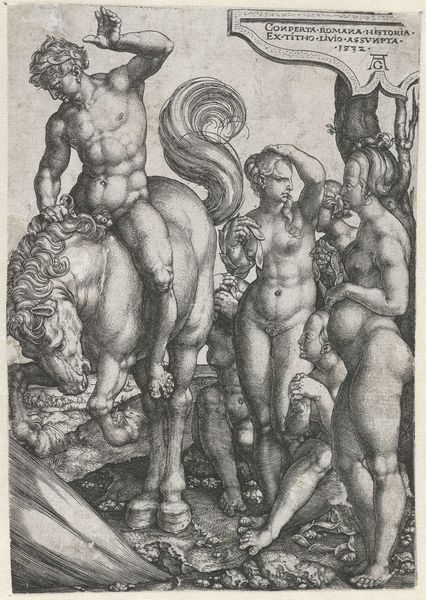
print, engraving
#
allegory
#
pen drawing
# print
#
old engraving style
#
mannerism
#
figuration
#
history-painting
#
northern-renaissance
#
nude
#
engraving
Dimensions: height 96 mm, width 65 mm
Copyright: Rijks Museum: Open Domain
Curator: Welcome. Today we’re examining “The Judgement of Paris,” an engraving created in 1538 by Heinrich Aldegrever, currently residing here at the Rijksmuseum. Editor: My first thought is how intricately detailed it is for a print! The level of cross-hatching gives the figures so much form, despite their seemingly stylized poses. It definitely makes you want to look more closely at how it conveys ideals of beauty. Curator: Indeed. Aldegrever, a key figure in the German Northern Renaissance, used printmaking to disseminate humanist ideals. This piece, a history-painting depicting the classical tale, is rich with allegorical undertones reflecting the socio-political tensions of the era. Editor: It's interesting how Aldegrever is reinterpreting a story of the divine feminine, though! Paris is asked to judge which goddess is the fairest: Hera, Athena, or Aphrodite. Look at these nude figures, idealized by masculine gaze. What does it tell us that a male artist shapes narratives of female beauty and power? Curator: Precisely. The “judgement” wasn’t solely about aesthetic value; the goddesses each offered Paris incentives, essentially bribes. Athena offered military victory, Hera political power, but Paris selected Aphrodite because she offered him the most beautiful woman, Helen of Troy, setting off the Trojan War. Aldegrever, like many artists of his time, used classical myths to comment on contemporary political power struggles. Editor: And note the omnipresent figure of Cupid hovering overhead. The narrative reinforces this link between female beauty, power, and the inevitable turmoil and violence it generates. I find myself questioning whose desires are being centered here – Paris', the goddesses', or even Aldegrever’s in depicting them this way? The very act of judging creates a power dynamic loaded with gendered implications. Curator: It highlights the challenges of navigating sources when unpacking visual histories and, simultaneously, the way Aldegrever understood, and reproduced, the structures around him. What resonates, even now, is the timeless human desire for beauty, power, and recognition, mirrored in these characters. Editor: Ultimately, reflecting on this image leaves me grappling with how artistic portrayals, even centuries old, contribute to and reflect cultural norms about women and power dynamics. Thank you for allowing me to deepen that consideration today!
Comments
No comments
Be the first to comment and join the conversation on the ultimate creative platform.


